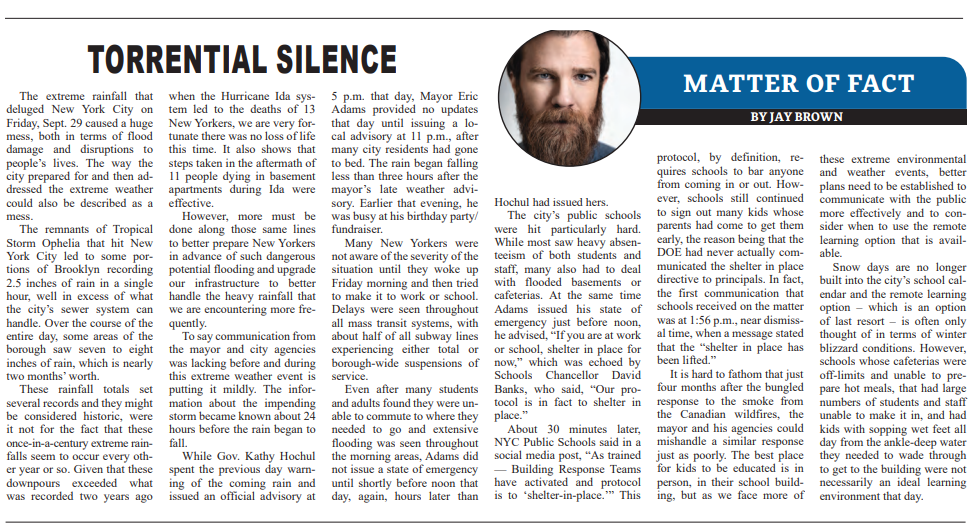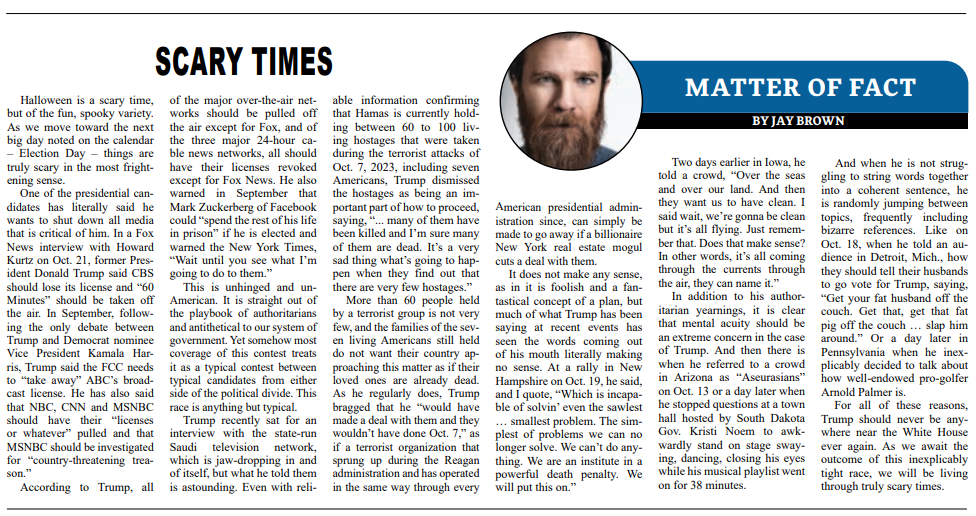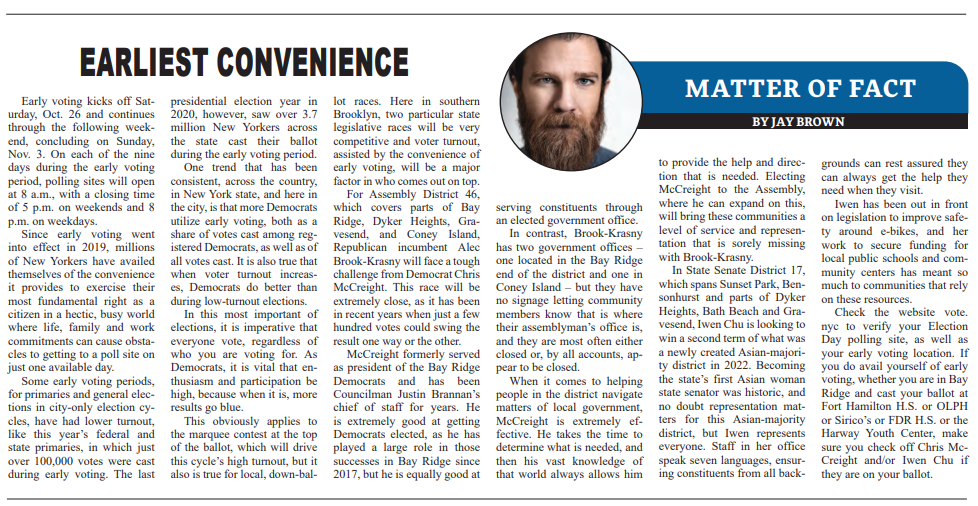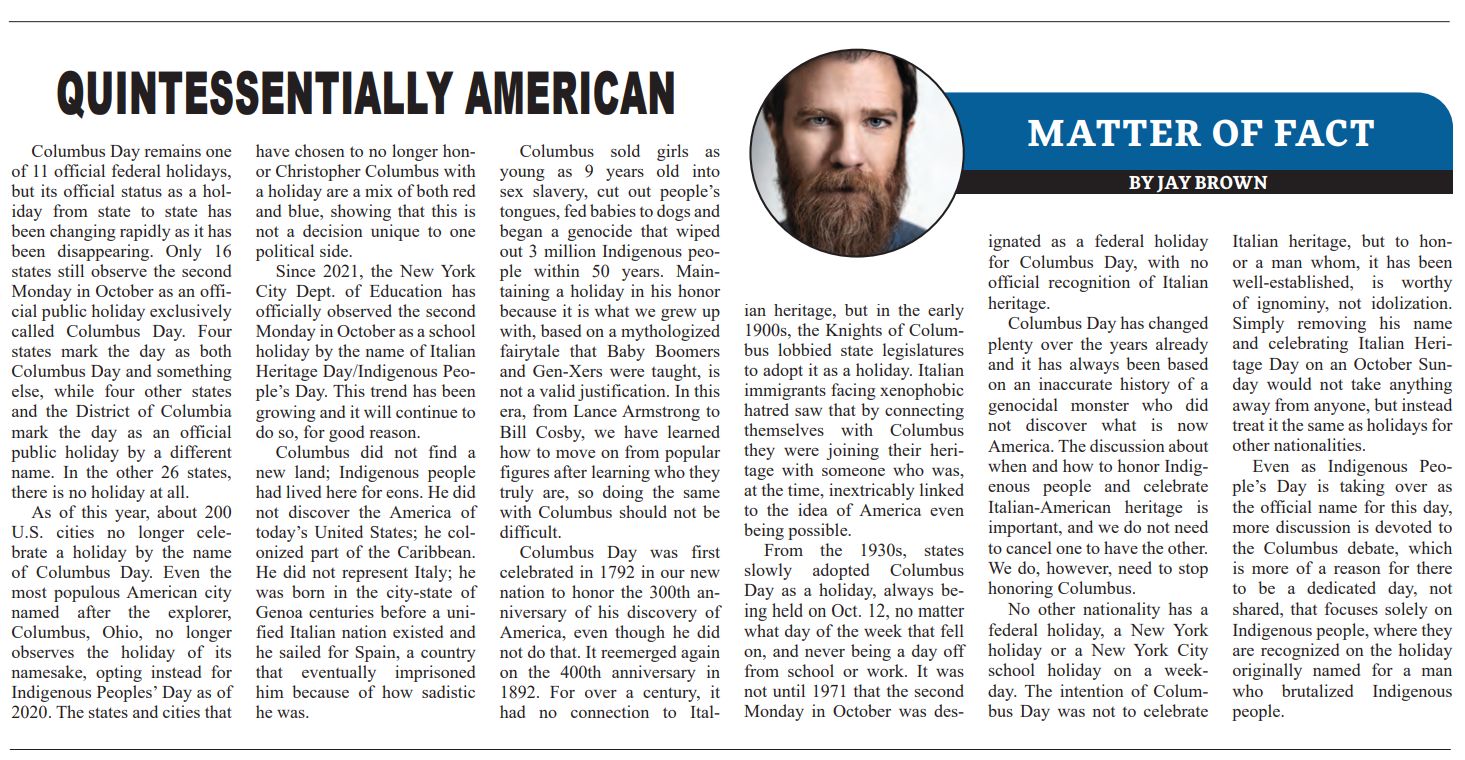This column, from the weekly opinion piece MATTER OF FACT, first appeared on BrooklynReporter.com, the Home Reporter and Spectator dated October 13, 2023
The extreme rainfall that deluged New York city Friday, September 29 caused a huge mess, both in terms of flood damage and disruptions to people’s lives. The way the city prepared for and then addressed the extreme weather could also be described as a mess.
The remnants of Tropical Storm Ophelia that hit New York City led to some portions of Brooklyn recording 2.5 inches of rain in a single hour, well in excess of what the city’s sewer system can handle. Over the course of the entire day, some areas of the borough saw seven to eight inches of rain, which is nearly two month’s worth of rain.
These rainfall totals set several records and they might be considered historic, were it not for the fact that these once-in-a-century extreme rainfalls seem to occur every other year or so. Given that these downpours exceeded what was recorded two years ago when the Hurricane Ida system led to the deaths of 13 New Yorkers, we are very fortunate there was no loss of life this time. It also shows that steps taken in the aftermath of 11 people dying in basement apartments during Ida were effective.
However, more must be done along those same lines to better prepare New Yorkers in advance of such dangerous potential flooding and upgrade our infrastructure to better handle the heavy rainfall that we are encountering more frequently.
To say communication from the mayor and city agencies was lacking before and during this extreme weather event is putting it mildly. The information about the impending storm became known about 24 hours before the rain began to fall.
While Gov. Hochul spent the previous day warning of the coming rain and issued an official advisory at 5 P.M. that day, Mayor Adams provided no updates that day until issuing a local advisory at 11 P.M., after many city residents had gone to bed. The rain began falling less than three hours after the mayor’s late weather advisory. Earlier that evening, he was busy at his birthday party/fundraiser.
Many New Yorkers were not aware of the severity of the situation until they woke up Friday morning and then tried to make it to work or school. Delays were seen throughout all mass transit systems, with about half of all subway lines experiencing either total or borough-wide suspensions of service.
Even after many students and adults found they were unable to commute to where they needed to go and extensive flooding was seen throughout the morning areas, Adams did not issue a state of emergency until shortly before noon that day, again, hours later than Hochul had issued hers.
The city’s public schools were hit particularly hard. While most saw heavy absenteeism of both students and staff, many also had to deal with flooded basements or cafeterias. At the same time Adams issued his state of emergency just before noon, he advised, “If you are at work or school, shelter in place for now,” which was echoed by Schools Chancellor Banks, who said, “our protocol is in fact to shelter in place.”
About 30 minutes later, NYC Public Schools said in a social media post, “As trained — Building Response Teams have activated and protocol is to “shelter-in-place.” This protocol, by definition, requires schools to bar anyone from coming in or out. However, schools still continued to sign out many kids whose parents had come to get them early, the reason being that the DOE had never actually communicated the shelter in place directive to principals. In fact, the first communication that schools received on the matter was at 1:56 P.M., near dismissal time, when a message stated that the “shelter in place has been lifted.”
It is hard to fathom that just four months after the bungled response to the smoke from the Canadian wildfires, the mayor and his agencies could mishandle a similar response just as poorly. The best place for kids to be educated is in-person, in their school building, but as we face more of these extreme environmental and weather events, better plans need to be established to communicate with the public more effectively and to consider when to use the remote learning option that is available.
Snow days are no longer built into the city’s school calendar and the remote learning option – which is an option of last resort – is often only thought of in terms of winter blizzard conditions. However, schools whose cafeterias were off-limits and unable to prepare hot meals, that had large numbers of students and staff unable to make it in, and had kids with sopping wet feet all day from the ankle-deep water they needed to wade through to get to the building were not necessarily an ideal learning environment that day.




